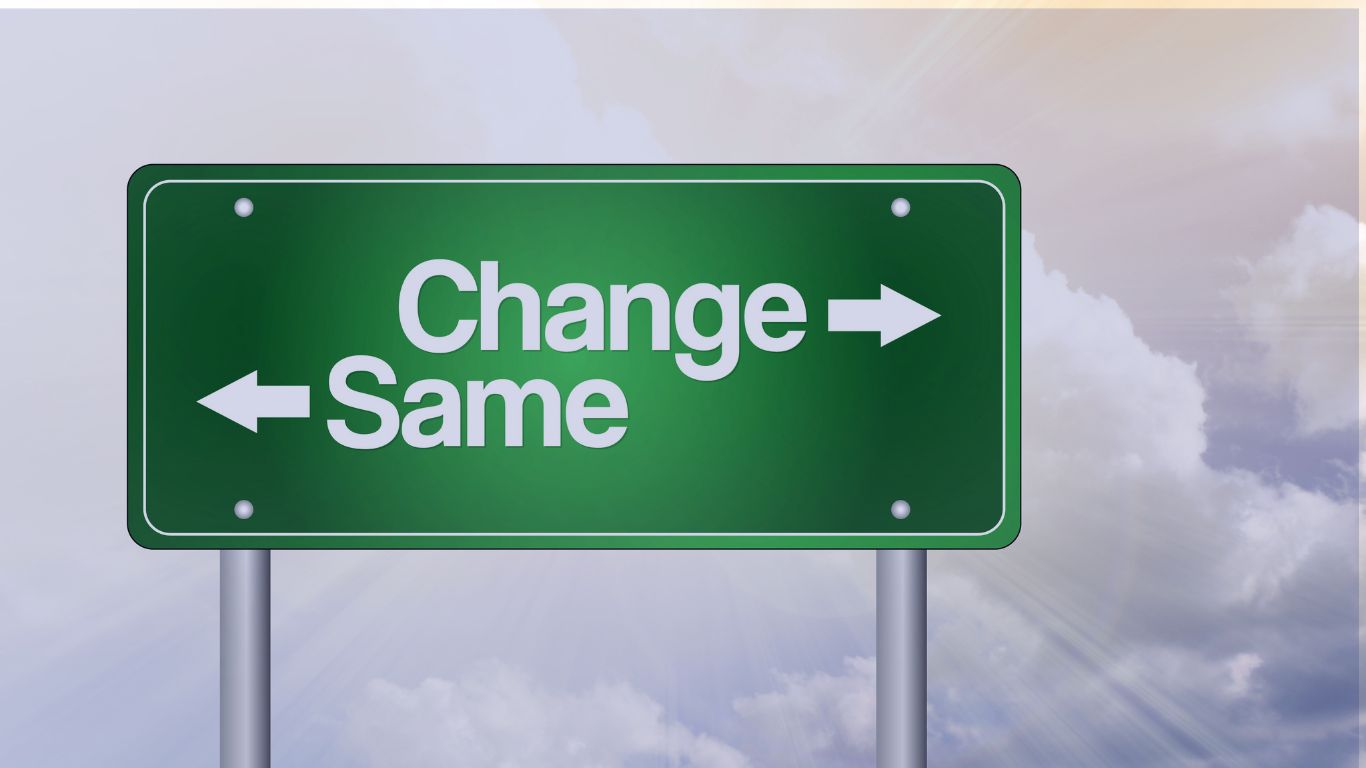What is Organizational DNA? Building Organizational Success
By now you understand that you have emotional DNA and family DNA and multi-generational DNA. But I wonder if you’ve considered the fact that there is also something called organizational DNA? So, what is organizational DNA? It’s all of those common goals, core values, and unwritten rules that you stumble into at work. Like if you’re not the first one in and the last one out, forget the promotion. That is part of an organization’s DNA.
Just like your emotional DNA is a result of the pattern of your thoughts, feelings, actions, and reactions, organizational DNA is not too different. An event happens, or an idea pops in, or a need comes up, and an organization is created around the thoughts, feelings, and actions around the event, idea or need. Simon Sinek, author and inspirational speaker on business leadership, refers to this as the big “why.” What created this company and the organization’s culture? What was the spark behind it?
Competitive edge
To operate effectively and happily within the idiosyncratic characteristics of a company (never mind coming to hold a competitive advantage), you’ve got to understand what drives the company and the important implications thereof. And it may not be the same as what created the company. For example, you may have a service-oriented company that was created because there were not X services for customers. Okay, that was the first step—the spark. But what drives the company forward and takes it to success? It’s not just that you’re meeting customer needs. Perhaps the strategic factor is that you’re ethical. You are honorable. You deliver great service. You know, all those “mottos” and taglines that you hear people use when they talk about a company? What are those driving factors?
It helps to know the faces behind those driving “mottos.” Who is responsible for their creation? Did the company “motto” originate with the CEO? The boards of directors? Were they created as part of the vision and mission statement? Or did they evolve out of the workplace itself? And if they did, what does this mean? Well, if the mottos and drivers evolve out of the workplace itself, for one thing, it indicates that the company is fluid and dynamic and quite possibly a stimulating work environment to be engaged in. And a challenging one.
There are so many different company organizational structures to consider, it’s kind of hard to think about it. You might be looking at a company that is package driven, customer service driven, or education driven. Once you identify the structure, then the next step is to determine the organization’s purpose. In education, it would be something like “creating a better world by creating smarter, happier kids.” In consumer packaging, it would be things like, “What best practices can meet customer needs and make our products appeal to consumers so that they buy them.” Or “What workforce development will demonstrate a family business’s sophistication? All that is your organizational DNA.
Strategic moves
Obviously, anybody walking into a company really wants to do a bit of a study of the organizational DNA model they’re getting involved with. And by the way, when I work with companies, I often find that a company’s motto or mission statement—even a single word or a phrase can throw you off the mark when it comes to grasping the most authentic organizational pieces. Interestingly enough, Tesla Motors is actually a great example of what I’m talking about here. At Tesla, the stated company mission is “to accelerate the advent of sustainable transport by bringing compelling mass market electric cars to market as soon as possible.”
If I’m an engineer, or a production floor manager, or an automotive designer just coming into the company, looking at the mission statement I’d immediately assume that high-performance teams geared towards creating efficiency and fast product design were the primary elements behind Tesla’s organizational DNA. And I’d be totally wrong making that logical assumption! I’m not saying that high-performance teams driving rapid product design are not a part of Tesla’s organizational DNA. They are. But to understand the other equally important drivers in the organizational DNA of the whole company, you have to investigate the mindset and values of the man behind Tesla Motors itself—CEO Elon Musk.
Alongside mass market accessibility, what actually makes Tesla … well, Tesla, is CEO Elon Musk’s vision to create beauty—form and function—as well as to offer an exceptionally high-quality driving experience that just happens to be housed in a sustainable, electric vehicle. Which means if I come in the door and hit the ground running making operational decisions around trying to slam a product together to get a mass market electric car to market as soon as possible, I’m in deep trouble.
Understanding the words and the motivation behind them are so important when investigating a company’s organizational DNA. Here’s another confusing example. Quite often a company will maintain that “We are a heart-centered organization.” While what this may well be referring to is a relationally-oriented company (more on this shortly), in many people’s minds those words have important implications, often translating as a “not for profit company.” At the very least, saying you are a “heart-centered organization” bears the misleading cachet of being a workplace where nobody really does very well. And that kind of negative organizational language can have potential investors, C-suite executives, and other talented people backing away without looking into the organization any further.
Strategic thinking
Perhaps it was exactly these kinds of erroneous, knee-jerk associations senior managers at Tesla were trying to avoid when they created the “mass market electric car” mission statement. Perhaps their years of experience creating coherent business strategy told them few people would easily believe a high-quality, high-performance, mass-market electric car would be possible? So, the decision makers created an overtly practical mission that would match customer needs and expectations, figuring as a resilient organization with resilient team players, current staff and new employees would manage to navigate the idiosyncratic characteristics of a company like Tesla headed by such an idiosyncratic leader as Musk and be able to just go with the flow and get the impossible job done!
As you can see, with organizational DNA there are so many different underlying factors in play. It’s knowing the words and phrases and the driving ideas that form the DNA that keeps everybody coming to either buy from you or work for you. But it’s also such things as, does this company understand money and its place? What is its strategic planning, economically speaking? Is it a data-driven company or a family-driven company, which tends to be much more relational in its day-to-day operations? (We will get into this shortly.) What creates the structure of this company? What are the building blocks? What’s the competitive advantage? Scarce resources? Major changes in the market? How does it maintain its competitive edge? How does it function economically? These are all components of organizational DNA that you need to understand in order to maximize your time and your efficiency in that company.
Data-driven vs relationship-driven companies
Systems are very elegant creatures. What we don’t work out in our family systems, we will often look to work out in our organizational systems, or what we can’t work out in the organization we then take it back home. Very often if you look at the leader of a company, you can pretty much tell what’s going on in their family by what’s going on in the organization and vice versa. So, they are always in service of each other.
Which finally brings me to data-driven versus relationship-driven companies. Data-driven and relationship-driven companies are two very, very different animals. The former is transactional—it’s about product, details, the Deal, business units, high-performance teams, and organizational performance. The latter is about relationships and HOW you get to the end result every bit as much as the result itself. It’s the kind of company whose organizational DNA is built upon the transformative power of strong leadership, which includes things like mindfulness training that can help individuals with stress management and performance management, building cross-functional team work, all of which adds up to a resilient organization with a lot of good people in it—engaged employees who enjoy being there!
Not surprisingly, if you have somebody who’s coming from the one environment to the other, they struggle for a while to acculturate. It’s a little bit like moving from one country to another—it’s a whole different culture.
In a data-driven system or company everything is, obviously, based on the data. Quite often in this kind of environment, the “heart” of a company and the people in it seem lost. People are considered and promoted strictly on functional merit, productivity, and maintaining a competitive edge. Their communication skills, their ability to work well with others, their ability to organize and motivate people are not important. There is not as much time or thought given to the person per se. It’s what you know, what you can do, and how you’re able to do it effectively.
Relationship-driven companies are all about who you know, how you relate, and common goals. And while this is certainly a warmer working environment, this orientation has its ups and downs as well. In relationship-driven organizational DNA, you may be the smartest, most efficient person in the room, but if you do not build good relationships and play well with others, you’re going to find yourself floundering.
Which means, if you’re a people person, a relationship-driven company that cares very much about the person and their personal development and professional development is going to feel like a good fit for you. If you are data driven, or accustomed to that kind of environment, not so much. Another way of describing the difference between the two business approaches is one is focused on what is known as hard skills and the other on soft skills.
A data driven company is more focused on your hard skills—your accomplishments, on your education, your organizational effectiveness and your quick, accurate decision making. It’s all about what you can produce for the company. The personal doesn’t enter into things at all. These are very clever and smart people in a fast-moving company situation where you are promoted or moved along based on your ability to do or to go to the next level in a hard skill.
On the other end, with a relationship-driven company, things like character leadership development and the individual goals of employees are important. It’s about fostering engaged employees, this doesn’t mean relationship-driven companies are not effective and profitable. They are super effective and can be quite profitable. They just focus more on people and what can you do for them in order to get success to happen. Can you take people along for the story? Can you engage and inspire people? This is more of your relationship-driven company. You learn very much to go from transactional relationships to deeper relationships.
Smart people know it’s never a bad idea to deliberately set about working in both environments to acquire a full understanding of these two kinds of companies with their two highly different types of organizational DNA, so they can know what personally suits them better. In the past, this wasn’t really possible, because most business organizations up until a few years ago were pretty much focused exclusively on hard skills.
Today, however, there is a growing recognition of the triple bottom line that considers equally the importance of People, Planet and Profit. In this model, it is understood that the transformative power of good leadership can make all the difference—the kind of inspiring leadership that can take a company, as well as the people in it, on a growth journey. As well, there is a very strong trend towards developing both hard and soft skills in individuals. If you don’t have soft relational skills, how are you going to effectively lead people? Plus, the upcoming generation wants to know things about companies and their leaders, like “What is your purpose? How are you contributing to society? And why should we follow you?”
As you can see, hard and soft skills are both highly relevant today. Having a combination of both is going to give you both breadth and depth, which makes you not just a specialist, but a generalist specialist. And those are highly effective people. As well, there are now hybrid organizations blending both approaches, looking for people who can operate in both organizational worlds. So, don’t be afraid to get both kinds of skills under your belt.
Good luck with your adventure!
To find out more about how to grow your leadership, attend one of our events this year! For more information about my 2024 events click here.











